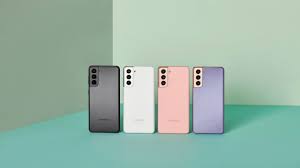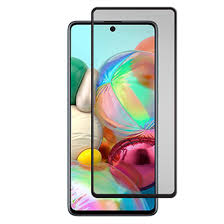Samsung Galaxy S21 Review
The launch of the first smartphone from a Korean brand to be built in South Korea is always exciting, but in recent years it has become less so. A new phone is great in itself and more about what the product offers, rather than how cool or innovative the device is. These days, the competition between brands for market share is fierce. In order to win, we need to identify the best feature or products of our competitors, then take our best features and place them where they belong and where consumers want them. This strategy doesn’t work very well when you look at smartphones because you can never make your customers have one thing to say about a smartphone. However, there is an even better alternative; building out the most impressive features into other devices through the integration of your own design. That way a customer will never feel inferior no matter what mobile company builds next (or what phone comes next). If that happens, they are now able to enjoy the benefits of your own creation too. So let’s look at how Galaxy S21 differs from all other phones on the market.
Samsung Galaxy S21 Specification:
As you can see above, S21 is bigger than any other Android phone. It weighs 4.3 pounds and measures 6.1 by 3.9 inches. The size is just as impressive as the OLED display found on S20+. It also uses 120Hz Super AMOLED displays. Not only does this allow the screen to go back even further on a regular basis but S21 also lets its users enjoy their favorite movies while playing games. With a 6.2-inch FHD+ display, you get 836 x 1670 pixel resolution, which is good enough for high-quality video and photography. You also get the highest accuracy in class possible with 99% of the pixels being exposed and with 1 ms response time. While still having the same screen size and resolution, S21 is slightly larger than normal due to an extra notch that follows up the camera array. The front camera has a 13-megapixel range and the rear is 12-megapixel with two sensors positioned at least 10 cm away from each other. To complete the picture, there is a 5-megapixel depth sensor as seen in the photos below. And if you think you look like Iron Man with the mask, then the cameras in the front and at the back provide different angles of view and bokeh effects.
S21 looks pretty much identical to a conventional phone, so I wouldn’t expect any major differences to be noticed in terms of design. However, once you flip it over, you will notice that the sides become angled down and the corners turn outwards. There is nothing fancy going on here for the sake of simplicity.
Samsung Galaxy S21 sensor:
There is one area where S21 stands out by some margin: the punch hole. On the left side, the power button sits on top of the right side housing. The center of this hole acts as the volume control (volume rocker) and the Home button on the right-hand side sits on top of the punch hole. Both of these buttons are smaller than a typical iPhone in today’s phones because the latter uses optical sensors to detect light, while the former uses electrical-type sensors. But the punch hole makes both of these buttons look small when flipped over. As such, these two features help S21 stand out more than other phones on the market.
The edges of the rest of the phone also appear to bend inwards. They are not quite straight, since the side edges also seem to curve outwards. I believe that this is the result of the fact that the edge-to-edge ratio of the phone is smaller than the standard ratio.
Samsung Galaxy S21 Camera
There is a lot more to this phone than I’ll point out here. For starters, the S21 includes a 64MP main camera, a three-lens dual-pixel autofocus system, 16-megapixel ultrawide, and 10-megapixel selfie cameras. It also supports LTE networks (2Ghz mmWave, 9-gigabit/second spectrum band, 2.4GHz band, sub-6 GHz mm/sub-2GHz bands). Thanks to the Snapdragon 730G chipset, it runs Android 11 out of the box.
Samsung Galaxy S21 Battery and Charging
The 5,000mAh battery has a 20 W fast charging support. Furthermore, you get 18W reverse wireless charging. All these things combined make this phone incredibly powerful, so it’s no wonder that folks keep saying that the Galaxy S21 is almost as strong as a flagship Galaxy Note 20 Ultra 2. As far as camera performance goes, S21 gives an average score of 0.82 from 153 user reviews and a total of 19,000 ratings. Those who use the phone regularly state that they love using Galaxy S21 for videos, photos, and social media. It has a solid experience to share content, even though it takes the camera a lot longer than you would expect. It doesn’t slow down a bit despite the fact the Galaxy S21 is huge for the sake of size and weight. What people don’t know about the Galaxy S21 is that it can run full-screen 1080p 60 fps gameplay at 30 fps or even frame rates higher if the hardware is set to ultra-fast mode. Of course, you get to play older games, but it should still be fun. Just think how many times Galaxy S10 and Galaxy S10 Plus players jump from high frame rate titles to 4K gameplay. Galaxy S21 boasts the fastest processor ever, making it run faster at 1440 Hz. Finally, you get two weeks warranty as opposed to one with Galaxy S10 and Galaxy S10 Plus.
So why am I writing a review of my upcoming phone? Because this is something else entirely. My previous experience has been mixed. Some customers prefer working on laptops but others like the freedom on the Galaxy S21 and find it difficult to use with Android (or other smartphone platforms, for that matter). Maybe I didn’t pick the right smartphone for me, and that is part of the reason why people like Galaxy S19 and Galaxy S21 phones.
I also want to mention another important aspect of Galaxy S21: Dual Air Charge. Unlike the Pixel, Galaxy S21 also has two separate charge pads. Instead of one big charger, you can easily connect to it with two tiny cables or a micro-USB cable that folds around. The second charge pad is connected to the Lightning port, meaning you will be charged at either lightning speed.











.jpg)

0 Comments